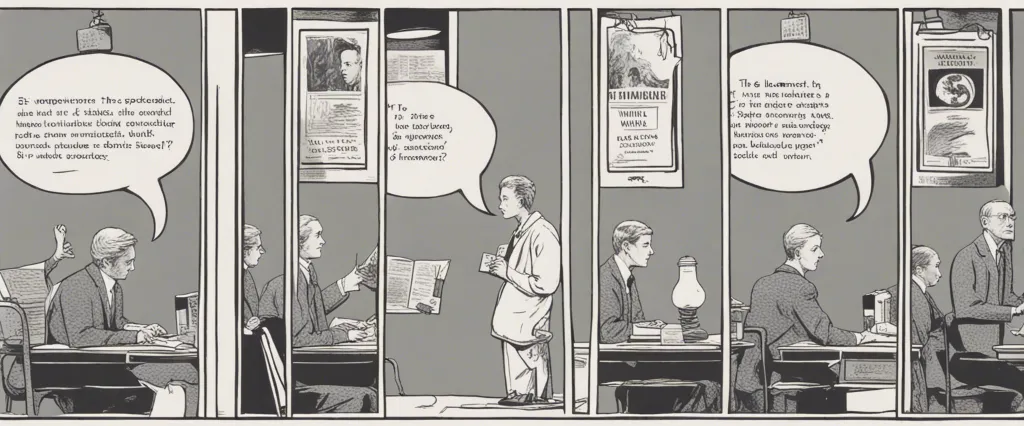“The Elements of Style,” written by William Strunk Jr., is a classic guidebook for writers, students, and anyone seeking to enhance their writing skills. Originally published in 1918 as a small instructional pamphlet, this influential book has become an indispensable resource for anyone striving to communicate effectively through the written word. William Strunk Jr., an esteemed professor of English at Cornell University, wrote this concise manual to provide practical advice and rules of usage for writers, emphasizing the importance of clarity, brevity, and precision in writing. Through its timeless insights and straightforward approach, “The Elements of Style” continues to empower generations of writers to craft their words with confidence and style.
Chapter 1: Grammar and Usage: Exploring the Fundamentals of Grammar, including Parts of Speech, Sentence Structure, and Correct Word Usage
Chapter 1 of “The Elements of Style” by William Strunk Jr., titled “Grammar and Usage: Exploring the Fundamentals of Grammar, including Parts of Speech, Sentence Structure, and Correct Word Usage,” provides a comprehensive overview of essential grammatical concepts.
At the core of this chapter is the study of grammar, which encompasses understanding sentence structure and the correct usage of words. Strunk emphasizes the importance of grammatical rules and conventions, emphasizing that without them, writing lacks clarity and can lead to confusion.
The chapter begins by introducing the eight parts of speech, emphasizing their significance in constructing sentences: nouns (person, place, or thing), pronouns (substitutes for nouns), verbs (action or state of being), adjectives (modify nouns or pronouns), adverbs (modify verbs, adjectives, or adverbs), prepositions (show relationships), conjunctions (connect words, phrases, or clauses), and interjections (express strong emotions). Strunk further explores each part of speech, helping readers understand their roles in constructing sentences.
Moving on, Strunk discusses sentence structure, including basic sentence types: simple, compound, complex, and compound-complex. He highlights the importance of constructing sentences that are clear, concise, and grammatically correct.
Finally, Strunk delves into word usage, pointing out common errors, such as incorrect word choices or the misuse of commonly confused words. He stresses the significance of using words accurately to convey ideas effectively.
In summary, Chapter 1 of “The Elements of Style” serves as a foundation for understanding grammar and usage. It explores the fundamentals of grammar, including parts of speech, sentence structure, and correct word usage, providing readers with a solid understanding of these essential elements in effective writing.
Chapter 2: Principles of Composition: Understanding the Key Principles of Effective Writing, such as Clarity, Conciseness, and Coherence
Chapter 2 of “The Elements of Style” by William Strunk Jr. delves into the key principles of effective writing, emphasizing clarity, conciseness, and coherence. The chapter highlights various guidelines and techniques that writers should employ to improve their overall writing style.
The chapter begins with an emphasis on clarity, stressing the importance of conveying ideas clearly to the reader. Strunk advises writers to choose their words carefully, avoid unnecessary complexity, and use straightforward language to ensure that the intended message is easily understood.
Conciseness is then explored, as Strunk encourages writers to be economical with their words and avoid excessive verbiage. He cautions against using long phrases where simpler ones suffice and suggests eliminating unnecessary words to make the writing concise and impactful.
The concept of coherence is introduced next. Strunk advises writers to organize their thoughts and ideas in a logical and coherent manner. He encourages the use of transitional words and phrases to connect different parts of the writing and maintain a smooth flow of ideas.
Throughout the chapter, Strunk provides numerous specific examples and exercises to illustrate the principles he discusses. He stresses the significance of revising and editing, as well as the importance of paying attention to the details—such as grammar, punctuation, and sentence structure—that contribute to effective writing.
In summary, Chapter 2 of “The Elements of Style” presents writers with essential principles to enhance their compositions. By focusing on clarity, conciseness, and coherence, writers can craft well-organized and impactful pieces that effectively communicate their intended message to the reader.
Chapter 3: Common Errors and Pitfalls: Identifying and Avoiding Common Writing Mistakes, including Misplaced Modifiers, Faulty Parallelism, and Pronoun Agreement
Chapter 3 of “The Elements of Style” by William Strunk Jr. focuses on common errors and pitfalls in writing, specifically covering misplaced modifiers, faulty parallelism, and pronoun agreement.
Misplaced modifiers refer to words or phrases that are not correctly placed in a sentence, resulting in unclear or unintentionally humorous meanings. The chapter provides examples and guidance to help writers identify and correct these errors. By adjusting the placement of modifiers, writers can ensure that the intended meaning is conveyed clearly.
Faulty parallelism occurs when grammatical structures within a sentence or paragraph do not follow a consistent pattern. This disrupts the flow and clarity of the writing. The chapter offers rules to maintain parallelism, such as ensuring consistent sentence structure and verb tense.
Pronoun agreement refers to the agreement in number, gender, and person between pronouns and their antecedents. Strunk Jr. highlights the importance of maintaining consistency in pronoun usage to avoid confusion for readers. The chapter provides guidelines for writers to ensure proper pronoun agreement.
Throughout the chapter, Strunk Jr. emphasizes the significance of simplicity and clarity in writing. By avoiding these common errors, writers enhance the readability of their work and effectively convey their intended message to the readers.
In conclusion, Chapter 3 of “The Elements of Style” addresses common writing mistakes related to misplaced modifiers, faulty parallelism, and pronoun agreement. Strunk Jr. provides examples and strategies to help writers identify and correct these errors, emphasizing the importance of simplicity, clarity, and consistency in writing. Understanding and applying these concepts can significantly improve the quality of one’s writing.
Chapter 4: Punctuation and Mechanics: Mastering the Rules and Usage of Punctuation Marks, Capitalization, and Proper Formatting

Chapter 4 of “The Elements of Style” by William Strunk Jr., titled “Punctuation and Mechanics: Mastering the Rules and Usage of Punctuation Marks, Capitalization, and Proper Formatting,” provides a comprehensive guide to the correct and effective use of punctuation, capitalization, and formatting.
The chapter begins by highlighting the importance of punctuation in conveying meaning and aiding clarity. It emphasizes the fundamental role of the comma and presents rules for its usage, such as separating items in a series and setting off introductory phrases. Strunk also addresses the usage of the semicolon, colon, dash, and parentheses, demonstrating their distinct purposes and giving examples of their appropriate application.
The chapter then delves into capitalization, explaining the different cases in which capital letters should be employed. Strunk emphasizes the importance of consistency and guidelines for capitalizing titles, proper nouns, and the pronoun “I.” Additionally, he discusses the use of italics or quotation marks for emphasis and with titles of books, poems, and other works.
The final section of the chapter covers proper formatting, including paragraphs, indentation, and margins. Strunk advises the use of a wide left margin to enable readers to easily locate the beginning of each line. Furthermore, he recommends double-spacing between sentences for improved readability.
Throughout the chapter, Strunk provides concrete examples and warns against common errors, ensuring readers can clearly grasp and practice the proper usage of punctuation, capitalization, and formatting. By following the guidelines in this chapter, writers can effectively enhance the clarity, coherence, and professionalism of their written works.
Chapter 5: Writing with Style: Developing a Unique Writing Style by Emphasizing Simplicity, Precision, and Vivid Language
Chapter 5 of “The Elements of Style” by William Strunk Jr. delves into the importance of developing a unique writing style by focusing on simplicity, precision, and vivid language. The chapter emphasizes that a writer must strive to grab the reader’s attention and maintain it throughout their work.
To begin, Strunk highlights the significance of simplicity. He argues that writing should be clear, concise, and free of unnecessary complexities. He advises against using overly ornate language, convoluted sentence structures, or gratuitous jargon that may confuse the reader. Instead, he urges writers to choose words carefully and with purpose, ensuring that the intended meaning is conveyed precisely.
Next, Strunk emphasizes the need for precision. He contends that vague and ambiguous writing can lead to misunderstanding or misinterpretation. Writers should be meticulous in their word choice, avoiding generalizations and ambiguities. They should provide specific examples and explanations, allowing the reader to fully grasp the intended message.
Finally, Strunk encourages writers to utilize vivid language. He advises the use of descriptive and lively words to create a vibrant and engaging reading experience. By incorporating colorful metaphors, vivid imagery, and sensory details, the writer can captivate the reader, making the content more memorable and enjoyable.
In summary, the chapter underscores the importance of simplicity, precision, and vivid language in developing a unique writing style. By focusing on conveying ideas clearly, choosing precise words, and employing vivid language, writers can craft powerful and compelling pieces that resonate with their readers.
Chapter 6: Writing for Different Audiences: Adapting Writing Style and Tone to Suit Different Readers and Purposes
Chapter 6 of “The Elements of Style” by William Strunk Jr. delves into the importance of adapting writing style and tone to suit different audiences and purposes. The chapter emphasizes that effective writing not only requires clarity and strong grammar, but also an awareness of who the readers are and what the writing aims to achieve.
The chapter begins by highlighting the need to identify the target audience. Strunk emphasizes that different groups have different expectations and vocabulary levels, and writers should adjust their writing style accordingly. The author emphasizes that targeting a specific audience helps writers connect with readers and convey the intended message more effectively.
Moreover, the chapter emphasizes the importance of adapting the tone of writing. Strunk explains that a formal tone should be used when addressing professional or academic audiences, while a more casual tone can be employed for personal or informal pieces.
Additionally, Strunk advises writers to consider the purpose of their writing. Clarity, conciseness, and simplicity are crucial when explaining complex ideas to lay audiences. On the other hand, technical subjects may require more specialized vocabulary and in-depth explanations.
The chapter concludes by highlighting the importance of striking the right balance between adapting the writing style to suit different audiences while remaining true to one’s own voice. Strunk urges writers to prioritize clarity and to avoid unnecessary jargon or complex language that may alienate readers.
Overall, Chapter 6 of “The Elements of Style” emphasizes the importance of considering the audience and purpose of writing. By adapting writing style and tone, writers can engage and effectively communicate with their intended readership, ensuring their message is understood and appreciated.
Chapter 7: Editing and Proofreading: Learning Effective Editing Techniques to Improve Clarity, Correct Errors, and Polish the Final Draft
Chapter 7 of “The Elements of Style” by William Strunk Jr. is titled “Editing and Proofreading: Learning Effective Editing Techniques to Improve Clarity, Correct Errors, and Polish the Final Draft.” This chapter delves into the importance of editing and proofreading in the process of writing, offering various techniques to enhance clarity, accuracy, and overall quality of the final draft.
Strunk emphasizes that editing is an essential step that writers should undertake after completing the initial draft. The chapter outlines several fundamental principles in editing, including the elimination of unnecessary words, the proper use of active voice, avoidance of jargon, and the importance of consistency and coherence.
Strunk highlights the significance of clarity in writing, urging writers to focus on expressing their ideas concisely and directly. He advises against the use of large words or elaborate phrases when simpler alternatives can be used effectively. Strunk also emphasizes the importance of correct grammar and punctuation to maintain clarity and avoid ambiguity.
In addition to clarity, Strunk stresses the significance of correct grammar and usage. He provides a comprehensive list of common grammatical errors and offers guidance on how to correct them. Strunk encourages writers to be meticulous in their proofreading, ensuring that they carefully examine the manuscript for spelling mistakes, punctuation errors, and typographic inconsistencies.
The chapter concludes by emphasizing the importance of revisiting and revising one’s work continuously. Strunk advises writers to seek feedback from others and to be open to constructive criticism in order to continuously improve their writing skills.
In summary, Chapter 7 of “The Elements of Style” serves as a guide to effective editing and proofreading techniques. It highlights the importance of clarity, correct grammar, and proofreading, providing practical advice to enhance the quality of the final written work.

Chapter 8: The Writer’s Toolkit: Exploring Resources and References for Writers, including Dictionaries, Thesauruses, and Style Guides
Chapter 8 of the book “The Elements of Style” by William Strunk Jr. is titled “The Writer’s Toolkit: Exploring Resources and References for Writers, including Dictionaries, Thesauruses, and Style Guides.” This chapter emphasizes the importance of utilizing various tools and references to enhance one’s writing skills.
The chapter begins by discussing dictionaries, which are essential for writers to ensure accurate spelling, definitions, and usage of words. Strunk Jr. advises using a reputable dictionary and learning to consult it whenever necessary. He also highlights the significance of understanding etymology, as it helps writers grasp the historical and linguistic roots of words, enabling them to employ them with precision.
Furthermore, Strunk Jr. advocates for the use of thesauruses as a means to expand vocabulary and avoid repetitive language. However, he also warns against excessive reliance on thesauruses, cautioning writers to choose words with care and ensure they genuinely fit the context.
Style guides, another essential resource, are then discussed in the chapter. Strunk Jr. advises writers to follow a style guide consistently to maintain coherence and professionalism throughout their writing. He specifically recommends The Chicago Manual of Style, which provides comprehensive guidelines for punctuation, capitalization, and formatting.
Additionally, Strunk Jr. touches upon specialized dictionaries and resources for specific fields, such as medical or legal writing, which offer terminology and conventions unique to those disciplines.
In summary, Chapter 8 emphasizes the importance of utilizing dictionaries, thesauruses, and style guides as valuable resources for writers. Strunk Jr. promotes their usage to enhance spelling, vocabulary, and overall writing style. He emphasizes the need for the writer to consult these tools judiciously, avoiding over-reliance and ensuring appropriateness within the given context. By using these resources effectively, writers can improve their language, expand their vocabulary, and maintain consistent and professional writing throughout their work.
After Reading
In conclusion, “The Elements of Style” by William Strunk Jr. is a timeless guide that offers valuable insights and practical advice on writing effectively. Strunk emphasizes the importance of simplicity, clarity, and brevity in writing, providing clear rules and examples to help writers improve their work. The book covers a wide range of topics, from grammar and punctuation to style and composition, and offers invaluable tips for achieving precision and elegance in writing. With its concise and straightforward approach, “The Elements of Style” remains an indispensable resource for writers, students, and anyone seeking to communicate with clarity and impact.
1. On Writing: A Memoir of the Craft” by Stephen King: Just like “The Elements of Style,” this book offers valuable insights and practical advice for aspiring writers. King shares his personal experiences and writing techniques, providing a unique perspective on the craft of storytelling.
2. Bird by Bird: Some Instructions on Writing and Life” by Anne Lamott: In this candid and humorous guide, Lamott explores the challenges of writing and offers encouragement to writers at all stages. Similar to “The Elements of Style,” her book emphasizes the importance of honesty, authenticity, and perseverance in writing.
3. Writing Down the Bones: Freeing the Writer Within” by Natalie Goldberg: Goldberg’s book focuses on overcoming writer’s block, exploring creativity, and cultivating a writing practice. It shares Strunk’s philosophy of writing with clarity and simplicity, encouraging writers to embrace their unique voice and tap into their inner creativity.
4. “Steering the Craft: A Twenty-First-Century Guide to Sailing the Sea of Story” by Ursula K. Le Guin: Le Guin, a legendary author, offers guidance on the art of storytelling and the mechanics of writing. Her book echoes Strunk’s emphasis on precision and clarity in language, while also exploring the power of imagination and narrative structure.
5. “The Art of Fiction: Notes on Craft for Young Writers” by John Gardner: Gardner’s book is a comprehensive guide that covers various aspects of fiction writing, from the writer’s mindset to the technicalities of crafting compelling stories. Like “The Elements of Style,” it offers practical advice and addresses common writing challenges, making it an essential resource for aspiring authors.




